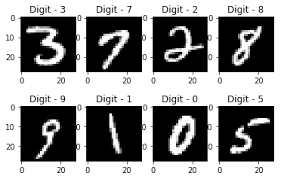In today’s era, organizations are equipped with advanced technologies that enable them to make data-driven decisions, thanks to the remarkable advancements in data mining and machine learning. The digital age we live in is characterized by rapid technological development, paving the way for a more data-driven society. With the advent of Big Data and the Industrial Revolution 4.0, organizations have access to vast amounts of data that can be harnessed to extract valuable insights and drive innovation. In this article, we will explore the top 10 data mining projects that can sharpen your skills.
Table of contents
What is Data Mining?
Data mining is the practice of finding hidden patterns in data gathered from users or data that is important to the company’s operations. This is subjected to several data-wrangling procedures. Businesses are searching for creative ways to collect this enormous amount of data to provide useful company data. It has emerged as one of the most important methods for innovation. Data mining projects might be the ideal place to start if you want to work in this area of present science.
Top 14 Data Mining Projects
Here are the top 14 data mining projects for beginners, intermediate and expert learners:
- Housing Price Predictions
- Smart Health Disease Prediction Using Naive Bayes
- Online Fake Logo Detection System
- Color Detection
- Product and Price Comparing tool
- Handwritten Digit Recognition
- Anime Recommendation System
- Mushroom Classification Project
- Evaluating and Analyzing Global Terrorism Data
- Image Caption Generator Project
- Movie Recommendation System
- Breast Cancer Detection
- Solar Power Generation Forecaster
- Prediction of Adult Income Based on Census Data
Data Mining Projects for Beginners
1. Housing Price Predictions

This data mining project focuses on utilizing housing datasets to predict property prices. Suitable for beginners and intermediate-level data miners, the project aims to develop a model that accurately forecasts the selling price of a home, taking into account factors such as size, location, and amenities.
Regression techniques like decision trees and linear regression are employed to obtain results. The project utilizes various data mining algorithms to forecast property values and selects predictions with the highest precision rating. By leveraging historical data, this project provides insights into predicting property prices within the real estate sector.
How to Solve Housing Price Prediction Project?
- Collect a comprehensive dataset containing relevant information on location, square footage, bedrooms, bathrooms, amenities, and previous sale prices.
- Preprocess and clean the data, addressing missing values and outliers.
- Perform exploratory data analysis to gain insights.
- Choose a suitable machine learning algorithm, such as linear regression or random forest, and train the model using the prepared data.
- Evaluate the model’s performance using metrics like mean squared error or R-squared.
- Fine-tune the model parameters if necessary to improve accuracy.
- Utilize the trained model to predict housing prices based on new input data.
Click here to view the source code for this data mining project.
2. Smart Health Disease Prediction Using Naive Bayes

The Smart Health Disease Prediction project focuses on predicting the development of medical conditions based on patient details and symptoms. It aims to assist healthcare workers in making informed decisions and providing timely medications using data mining and machine learning techniques.
Users can receive guidance throughout the disease prediction process by employing a virtual intelligent healthcare system. The Naive Bayes model uses training data to estimate the likelihood of medical conditions given the symptoms. This project enables healthcare professionals to detect diseases early, leading to timely treatments and therapeutic interventions.
How to Solve this Data Mining Project?
- Gather a dataset containing relevant medical features, including symptoms, medical history, and diagnostic test results.
- Preprocess the data by handling missing values and encoding categorical variables.
- Apply the Naive Bayes algorithm, which assumes feature independence, to train a classifier.
- Split the dataset into training and testing sets to evaluate the model’s performance.
- Measure accuracy, precision, recall, and F1-score to assess the model’s effectiveness.
- Fine-tune the model if necessary by adjusting smoothing parameters.
- Once trained and validated, the model can predict diseases based on input symptoms and medical information.
Click here to get the source code for this project.
3. Online Fake Logo Detection System

The proliferation of fake logos for fraudulent purposes necessitates the development of an automated system to detect and identify them, safeguarding intellectual property rights. By leveraging data mining methods and a large dataset of logos collected from the internet, this project aims to differentiate between fake and authentic logos.
This data mining project offers a scalable and automated solution to address the growing number of fake logos online. It involves developing a machine-learning model that accurately distinguishes genuine and fake logos.
How to Solve Online Fake Logo Detection System Project?
- Acquire a dataset containing authentic and fake logos, including diverse image samples.
- Preprocess the images by resizing and normalizing them for consistent analysis.
- Extract relevant features from the images using deep learning-based feature extraction or computer vision algorithms.
- Fine-tune the model to enhance its detection capabilities.
- Integrate the trained model into a system capable of real-time analysis of online logos, flagging potential fake logos based on the model’s predictions.
Click here to get the source code for this data mining project.
4. Color Detection

The Color Detection project explores the vast spectrum of colors the human eye can perceive, aiming to develop a tool for color identification from images. By creating a collection of pictures or data samples encompassing a range of colors, this project provides valuable insights for image processing, computer vision, and various disciplines reliant on color analysis.
How to Solve Color Detection Project?
- Capture or acquire images featuring objects with distinct colors.
- Preprocess the images by resizing and converting them into a suitable format for analysis.
- Apply image processing techniques, such as color space conversion and thresholding, to isolate the colors of interest.
- Utilize computer vision algorithms to identify and extract the desired colors from the images.
- Implement a color detection algorithm capable of accurately detecting and classifying colors.
- Test the algorithm on different images and evaluate its performance.
- Fine-tune the algorithm’s parameters if necessary to enhance accuracy and robustness.
Here is the source code for this project.
5. Product and Price Comparing tool

With the growth of e-commerce and online shopping, consumers often face the challenge of navigating various products and varying prices. The Product and Price Comparing Tool addresses this issue by utilizing data mining methods to gather and analyze product data from multiple online sources, including details such as qualities, features, and prices. The tool compares items and pricing through filtered and feature-extracted datasets to assist consumers in making informed purchasing decisions.
This project provides valuable benefits to consumers. Users can discover the best offers, discounts, and deals, ensuring the most economical purchases. Additionally, the tool can offer insights into market trends, bestsellers, and customer preferences based on the gathered and analyzed data.
How to Solve the Product and Price Comparing Tool Project?
- Gather product data from various sources, such as e-commerce websites or APIs, including information like product names, descriptions, and prices.
- Clean and preprocess the data, addressing any inconsistencies or missing values.
- Develop a web scraping or API integration system to extract the desired product information automatically.
- Implement a search and comparison functionality that allows users to input their desired products and compare prices, features, and other relevant attributes.
Click here to get the source code for this project.
Data Mining Projects for Intermediate
6. Handwritten Digit Recognition

The Handwritten Digit Recognition project utilizes the widely popular MNIST dataset to develop a model capable of detecting handwritten digits. This project serves as an excellent introduction to machine learning concepts. By employing machine learning techniques, participants will learn to identify and classify images of handwritten digits.
The project involves the implementation of a vision-based AI model, leveraging machine learning techniques and convolutional neural networks. It will incorporate an intuitive graphical user interface that allows users to write or draw on a canvas, with an output displaying the model’s digit prediction.
How to Solve this Data Mining Project?
- Gather a large dataset of handwritten digits, such as the MNIST dataset.
- Apply image preprocessing methods like normalization and scaling to enhance image quality.
- To recognize and categorize the digits, utilize the dataset to train a machine learning system, such as a Convolutional Neural Network (CNN).
- Fine-tune the model through techniques like cross-validation and hyperparameter tuning.
- Evaluate the performance of the trained model by testing it on new, unseen handwritten digits.
- Make improvements to the model as necessary based on the evaluation results.
Here is the source code for this project.
7. Anime Recommendation System

The Anime Recommendation System project aims to develop a framework that generates valuable recommendations based on user watching history and sharing scores. This data mining project utilizes clustering methods and additional computational functions in Python to provide anime recommendations. Machine learning techniques such as decision trees or neural networks, combined with data on user habits, demographics, and social interactions, can enhance the recommendation system.
How to Solve This Data Mining Project?
- Gather a comprehensive dataset containing anime titles, user ratings, and relevant metadata.
- Preprocess the data by cleaning it, handling missing values, and encoding categorical variables.
- Implement collaborative filtering techniques, such as user-based or item-based collaborative filtering, to construct the recommendation system.
Here is the source code for anime recommendation system project.
8. Mushroom Classification Project

Mushrooms come in various types, making it crucial to classify them based on their edibility. This project focuses on distinguishing different types of mushrooms, categorizing them as edible, poisonous, or of uncertain edibility.
Data mining techniques can automate this process by analyzing a dataset of mushroom specimens and identifying significant characteristics related to their consumption. The classification model’s effectiveness is evaluated using precision, recall, and F1-score metrics.
How to Solve the Mushroom Classification Project?
- Preprocess the dataset by encoding categorical variables and handling missing values.
- Train a machine learning algorithm on the dataset, such as a Decision Tree or Random Forest, to classify mushrooms as edible or poisonous.
- Analyze feature importance to understand which characteristics contribute most to the classification.
- Evaluate the model’s performance using accuracy, precision, recall, and F1-score metrics.
Here is the source code for mushroom classification project.
9. Evaluating and Analyzing Global Terrorism Data

Data mining algorithms are employed to examine and investigate patterns in terrorism data, utilizing prepared and feature-extracted datasets. This process enhances our understanding of terrorism trends, root causes, and evolving tactics used by terrorist organizations. Data mining facilitates the identification and filtering of web pages that promote terrorism, improving efficiency in combating this threat.
How to Solve this Data Mining Project?
- Gather a comprehensive dataset containing information on terrorist attacks, including date, location, attack type, target type, and casualty details.
- Utilize exploratory data analysis techniques, such as visualizations of temporal patterns, geographic distributions, and correlations between variables, to gain insights into the dataset.
- Employ data visualization and statistical analysis tools to identify trends, hotspots, and patterns in international terrorism.
- Apply machine learning algorithms like clustering or classification to group similar incidents or predict specific aspects of terrorism.
- Summarize the findings and insights in a report or presentation, providing a comprehensive analysis of global terrorism data.
Here is the source code for global terrorism data project.
Data Mining Projects for Advanced
10. Image Caption Generator Project

The Image Caption Generator project focuses on developing a system that can generate descriptive captions for images. This project combines Convolutional Neural Networks (CNN) and Long Short-Term Memory (LSTM) to analyze image features and generate relevant captions.
How to Solve Image Caption Generator Project?
- Collect a large dataset of images with corresponding captions.
- Preprocess the images by resizing and normalizing them.
- Extract meaningful features from the images using CNN models like Xception.
- Preprocess the captions by tokenizing them into words and creating a vocabulary.
- Utilize a combination of LSTM models and attention mechanisms to train a model that can generate captions for new images.
- Fine-tune the model by adjusting hyperparameters and experimenting with different architectures.
- Evaluate the model’s performance using metrics like BLEU score to measure the quality of generated captions.
- Visualize the generated captions alongside their corresponding images to assess their accuracy and relevance.
Here is the source code for image generator project.
11. Movie Recommendation System

The Movie Recommendation System project involves collecting data from millions of consumers on television shows and movies, making it a prominent data mining project in Python.
The goal is to predict users’ scores for movies they haven’t watched, enabling personalized movie suggestions. Collaborative filtering algorithms and natural language processing (NLP) techniques analyze movie summaries and reviews to achieve this.
How to Solve this Data Mining Project?
- Collect a dataset of user ratings for various movies.
- Preprocess the data by handling missing values and normalizing ratings.
- Build a user-item matrix to represent user-movie interactions.
- Apply matrix factorization methods like Singular Value Decomposition (SVD) or Alternating Least Squares (ALS) to decompose the matrix and learn latent factors.
- Utilize these factors to generate personalized movie recommendations based on user preferences.
- Enhance the recommendation system by incorporating content-based filtering or hybrid approaches.
- Evaluate the system’s performance using precision, recall, and mean average precision.
Click here to get the source code for this project.
12. Breast Cancer Detection

Early detection of breast cancer significantly improves survival rates by enabling prompt clinical intervention. Machine learning has emerged as a powerful approach for breast cancer pattern recognition and prediction modeling, leveraging its ability to extract key features from complex breast cancer datasets.
This project utilizes various data mining methods to uncover patterns and establish connections within breast cancer data. Commonly employed techniques include association rule mining, logistic regression, support vector machines, decision trees, and neural networks.
How to Solve this Data Mining Project?
- Collect a dataset of breast images, along with corresponding labels indicating the presence or absence of cancerous cells.
- Preprocess the images by resizing, normalizing, and augmenting them to enhance dataset diversity.
- Extract features from the images using techniques such as Convolutional Neural Networks (CNNs) or pre-trained models like VGG or ResNet.
- Train a classification model, such as Support Vector Machines (SVM), Random Forest, or a deep learning model, to classify images as benign or malignant.
- Fine-tune the model’s hyperparameters and optimize performance using techniques like cross-validation.
- Evaluate the model’s accuracy, precision, recall, and F1-score to assess its effectiveness in breast cancer detection.
Click here to get the source code for this project.
13. Solar Power Generation Forecaster

Solar energy is widely recognized as a crucial source of renewable energy. The Solar Power Generation Forecasting project utilizes transparent, open box (TOB) networks for data mining and future forecasts. By analyzing hourly data records from power generation and sensor readings datasets, this project provides precise information for solar energy forecasting.
The project consists of power generation datasets collected at the inverter level, where each inverter is connected to multiple sets of solar panels. Additionally, sensor data is obtained at the plant level, strategically placed for optimal readings.
How to Solve this Data Mining Project?
- Gather historical data on solar power generation, including weather conditions, solar panel specifications, and energy production.
- Preprocess the data by handling missing values and normalizing the features.
- Split the dataset into training and testing sets, preserving the temporal order.
- Build a forecasting model using techniques like time series analysis, autoregressive models (ARIMA), or machine learning algorithms like Random Forest or Gradient Boosting.
- Train the model using the training data and evaluate its performance using metrics like Mean Absolute Error (MAE) or Root Mean Squared Error (RMSE).
- Fine-tune the model by adjusting parameters and incorporating additional features to improve accuracy.
- Validate the model’s performance on the testing set and make predictions for future solar power generation.
Click here to get the project source code.
14. Prediction of Adult Income Based on Census Data

The Prediction of Adult Income project aims to forecast whether an individual’s annual income exceeds $50,000 based on census records. By employing various machine learning techniques such as logistic regression, random forests, decision trees, and gradient boosting, this project provides valuable insights into factors associated with increased income and helps address bias in financial activities.
How to Solve this Data Mining Project?
- Collect a dataset containing census information like age, education level, occupation, and marital status, along with labels indicating income exceeding $50,000.
- Preprocess the data by handling missing values, encoding categorical variables, and normalizing numerical features.
- Explore the dataset to gain insights and perform feature selection to identify influential variables.
- Train a classification model using algorithms like Logistic Regression, Decision Trees, Random Forest, or Gradient Boosting to predict income levels.
- Fine-tune the model’s hyperparameters using techniques like grid search or random search.
- Evaluate the model’s performance using metrics such as accuracy, precision, recall, and F1-score.
- Analyze the important features contributing to the prediction and generate predictions on new census data.
Here is the source code for the data mining project.
Conclusion
In today’s data-driven world, organizations rely on data mining and analysis to optimize operations and deliver exceptional experiences across various industries, including healthcare and e-commerce. We offer the Certified AI and ML Blackbelt Plus program, tailored for aspiring data miners. This program features an engaging curriculum with a diverse range of data mining projects designed to give you a head start in your career. By completing these projects, you’ll gain practical experience and enhance your skills, positioning yourself as a valuable asset in the data mining. Join our program and unlock the potential to excel in the dynamic world of data mining.
Frequently Asked Question
A. Yes, data mining is reliant on coding. The data mining specialists use programming to clean, process and interpret data mining results.
A. The basic steps to create a data mining project include choosing a data source, creating a data set, defining the mining structure, training the models, and analyzing the answers.
A. There are various software used for data mining, such as Knime, H2O, Orange, IBM SPSS modeler, etc.
A. The most successful examples of successful data mining are social media optimization, marketing, enhanced customer service and recommendation systems.




